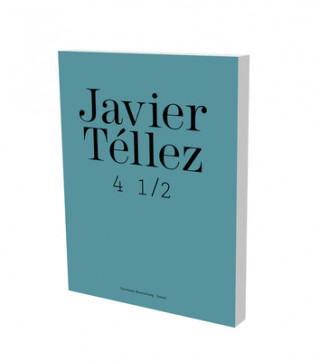
Kod: 05045901
Javier Tellez: Braunschweig Catalogue
Autor Hilke Wagner
Wie haben Sie das gemacht Mr. Téllez?§Die vorliegende Publikation dokumentiert die erste institutionelle Einzelausstellung des New Yorker Künstlers Javier Téllez (geb. 1969 in Venezuela) in Deutschland. Längst überfällig erscheint ... więcej
- Język:
 Angielski
Angielski - Oprawa: Miękka
- Liczba stron: 128
Wydawca: Snoeck Verlagsgesellschaft mbH, 2010
- Więcej informacji o książce

161.76 zł
Zwykle: 170.23 zł
Oszczędzasz 8.46 zł
Dostępność:
50 % szansa Otrzymaliśmy informację, że książka może być ponownie dostępna. Na podstawie państwa zamówienia, postaramy się książkę sprowadzić w terminie do 6 tygodni. Gwarancja pełnego zwrotu pieniędzy, jeśli książka nie zostanie zabezpieczona.
Otrzymaliśmy informację, że książka może być ponownie dostępna. Na podstawie państwa zamówienia, postaramy się książkę sprowadzić w terminie do 6 tygodni. Gwarancja pełnego zwrotu pieniędzy, jeśli książka nie zostanie zabezpieczona.Przeszukamy cały świat
Zobacz książki o podobnej tematyce
-

Playing the Harpsichord Expressively
418.45 zł -

Historical Harpsichord Technique
196.68 zł -

Rivers and Lochs of Scotland
92.02 zł -23 % -

Cambridge Companion to the Harpsichord
540.13 zł -

Naturally Healthy Mexican Cooking
123.26 zł -10 % -

Cold Before the Dawn
132.21 zł -

Confronting Crime
292.30 zł
Podaruj tę książkę jeszcze dziś
- Zamów książkę i wybierz "Wyślij jako prezent".
- Natychmiast wyślemy Ci bon podarunkowy, który możesz przekazać adresatowi prezentu.
- Książka zostanie wysłana do adresata, a Ty o nic nie musisz się martwić.
Powiadomienie o dostępności
Wpisz swój adres e-mail, aby otrzymać od nas powiadomienie,
gdy książka będzie dostępna. Proste, prawda?
Więcej informacji o Javier Tellez: Braunschweig Catalogue
Za ten zakup dostaniesz 95 punkty
 Opis
Opis
Wie haben Sie das gemacht Mr. Téllez?§Die vorliegende Publikation dokumentiert die erste institutionelle Einzelausstellung des New Yorker Künstlers Javier Téllez (geb. 1969 in Venezuela) in Deutschland. Längst überfällig erscheint diese Monografie eines Kü?nstlers, der bereits an unzähligen bedeutenden Gruppenausstellungen, wie der Biennale von Venedig (2001 u. 2003), Sydney (2004) oder der Whitney Biennale (2008) sowie der Manifesta 7, beteiligt war.§In seiner Arbeit zwischen Fiktion und Dokumentation interpretiert Téllez klassische Literatur-, Theater- und Filmstoffe neu und reißt gewohnte soziokulturelle Grenzen ein. Die Ausstellung im Kunstverein Braunschweig umfasste neben Installationen vier seiner bedeutendsten Filmwerke. La Passion de Jeanne d Arc (Rozelle Hospital, Sydney) (2004) gilt als wegweisende Filmproduktion Téllez . Der überarbeitete Stummfilm Jeanne d Arc(1928) und der in einer psychiatrischen Klinik gedrehte Film Twelve and a Marionette werden als Doppelprojektion präsentiert. Die Gegenüberstellung von Jeanne d Arc, die zu ihrer Zeit als Besessene stigmatisiert, heute als Visionärin und Nationalheldin anerkannt ist, rückt die Patientinnen in ein neues Licht.§In Oedipus Marshal (2006) inszeniert Téllez Sophokles klassische Tragödie König Ödipus mit Westernkostümen und japanischen Masken vor der Kulisse einer verlassenen Goldgräberstadt in Colorado. Die Maskierungen führen eine Meta-Ebene ein: Als ambivalente Elemente verschleiern und entmystifizieren sie zugleich, sie destabilisieren Persönlichkeitsgrenzen, symbolisieren aber auch die ausgeprägte Fähigkeit zur Mimikry psychisch kranker Menschen, die Téllez meist als Schauspieler einsetzt.§Letter on the Blind for the Use of Those Who See (2007) greift auf den titelgebenden Klassiker von Diderot zurück und verweist darauf, dass Realität keineswegs eine objektiv bewertbare Konstante ist.§Die aktuellste Arbeit Caligari und der Schlafwandler (2008) basiert auf dem expressionistischen Stummfilm Das Kabinett des Dr. Caligari von 1919. Die Vermischung von Realitätsebenen, Identitätswechsel und Mehrstimmigkeit sind Themen, die Téllez Filme häufig inhaltlich aufgreifen, aber auch darstellungstechnisch umsetzen. Durch die Wahl von Mendelsohns Einsteinturm einer Ikone der expressionistischen Architektur als Drehort, wird hier zudem auf eine Epoche der Kunst und des Filmes verwiesen, die sich erstmals mit pathologischen Störungen auseinandersetzt und sich davon inspirieren lässt. How Did You Do This Mr. Téllez?§This catalogue documents the first museum-based solo exhibition in Germany by the New York artist Javier Téllez (born 1969 in Venezuela). This monograph would seem to be long overdue in view of the fact that the artist has already taken part in innumerable group exhibitions, such as the Biennials in Venice (2001 and 2003), Sydney (2004) or the Whitney Biennial (2008), as well as Manifesta 7.§Javier Téllez, whose work oscillates between fiction and documentation, reinterprets classic material from the stage and screen, and deconstructs accustomed socio-cultural boundaries. Alongside installations by the artist, the Kunstverein also presented Téllez s four most important films. La Passion de Jeanne d Arc (Rozelle Hospital, Sydney) (2004) is regarded as being exemplary for Téllez s pioneering film production.§The reworked silent film Jeanne d Arc (1928) and the film Twelve and a Marionette, which was shot in a psychiatric clinic, were shown as a double projection. Twelve women speak in very different ways about the institutional treatment of their illnesses (depression, schizophrenia). The juxtaposed projections of Jeanne d Arc who was stigmatized and persecuted in her day as a soul possessed and is recognized nowadays as a misunderstood visionary and national hero place the patients maladies in an altogether new light.§In the film Oedipus Marshal (2006), Téllez stages Sophocles classic tragedy, Oedipus Rex, with Western costumes and Japanese masks. An abandoned gold rush town in Colorado served as the backdrop. The masks and maskings in Téllez s films introduce a meta level. As ambivalent elements, they both conceal or demystify them at the same time; they destabilize personality boundaries, but also symbolize the facility that psychiatric patients whom Téllez tends to employ as actors have for mimicry.§Letter on the Blind for the Use of Those Who See (2007) draws on the eponymous classic by Diderot and the Buddhist parable of the blind men and the elephant. The parable makes us aware of the fact that reality is by no means an objective constant, but defined instead by our own perception.§Téllez s most recent film, Caligari und der Schlafwandler (Caligari and the Sleepwalker) (2008), is based on the 1919 Expressionist silent film, The Cabinet of Dr. Caligari. In Telléz s interpretation, Dr. Caligari carries out a kind of therapeutic conversation with Cesare, who has been in a kind on somnambulist state for years and can only communicate by means of slabs of slate. The mixture of layers of reality, changes of identity, and polyphony are common thematic strands taken up by, but also implemented in terms of representational techniques by Téllez s films. By selecting the Erich Mendelsohn s icon of Expressionist architecture, the Einstein Tower in Potsdam, as the location for the film, he also points to an epoch of art and film history in which pathological disturbances were addressed for the first time and inspiration duly drawn from them.
 Szczegóły książki
Szczegóły książki
Kategoria Książki po angielsku The arts Art forms Non-graphic art forms
161.76 zł
- Pełny tytuł: Javier Tellez: Braunschweig Catalogue
- Autor: Hilke Wagner
- Język:
 Angielski
Angielski - Oprawa: Miękka
- Liczba stron: 128
- EAN: 9783940953483
- ISBN: 3940953482
- ID: 05045901
- Wydawca: Snoeck Verlagsgesellschaft mbH
- Waga: 568 g
- Wymiary: 269 × 211 × 14 mm
- Data wydania: 01. July 2010
Ulubione w innej kategorii
-

Final Fantasy Vii Remake: Material Ultimania
162.06 zł -11 % -

World Of Cyberpunk 2077
146.34 zł -14 % -

The Complete Art Of Guild Wars
162.06 zł -11 % -

Legend Of Zelda, The: Breath Of The Wild - Creating A Champion
199.07 zł -10 % -

Nier: Automata World Guide Volume 2
163.45 zł -5 % -

World Of Tom Clancy's The Division
146.34 zł -14 % -

Final Fantasy Vii Remake: World Preview
104.26 zł -4 % -

BoJack Horseman: The Art Before the Horse
163.65 zł -4 % -
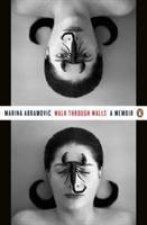
Walk Through Walls
51.33 zł -23 % -

Resident Evil 7: Biohazard Document File
124.06 zł -4 % -

Tanzanite: Born from Lightning
277.57 zł -14 % -
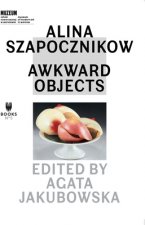
Alina Szapocznikow - Awkward Objects
143.76 zł -

Art Of Cuphead
162.06 zł -11 % -
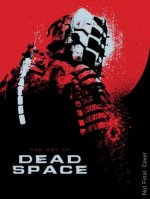
The Art of Dead Space
143.56 zł -5 % -

Advanced Jewellery CAD Modelling in Rhino
127.14 zł -14 % -

Art Of Doom: Eternal
146.34 zł -14 % -

Final Fantasy XIV Shadowbringers
162.06 zł -11 % -

Super Mario Encyclopedia
146.34 zł -14 % -

Vogue The Jewellery
162.76 zł -12 % -

Complete Guide to Chip Carving
84.46 zł -4 % -

Final Fantasy Vii Poster Collection
104.26 zł -4 % -

Castlevania: The Art Of The Animated Series
163.45 zł -5 % -

Art Of Star Wars Jedi: Fallen Order
169.32 zł -7 % -

Legend Of Zelda, The: Art & Artifacts
199.07 zł -10 % -

Gwent: Art Of The Witcher Card Game
111.02 zł -33 % -

Modelling and Sculpting the Human Figure
76.50 zł -5 % -

Art of Assassin's Creed III
114.80 zł -15 % -
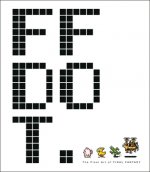
Ff Dot: The Pixel Art Of Final Fantasy
104.26 zł -4 % -

Art Of The Last Of Us Part Ii Deluxe Edition
399.15 zł -
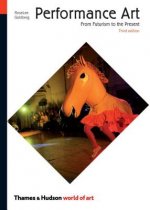
Performance Art
133.21 zł -1 % -
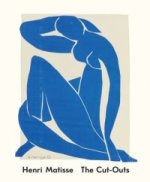
Henri Matisse: The Cut-Outs
137.29 zł -23 % -

Dota 2: The Comic Collection
104.26 zł -4 % -
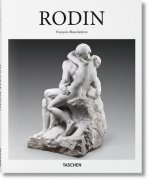
Rodin
53.91 zł -31 % -

Silver Clay Workshop
78.49 zł -23 % -
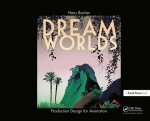
Dream Worlds: Production Design for Animation
252.60 zł -4 % -

Art of Soldering for Jewellery Makers
69.53 zł -23 % -

Art Of Halo Infinite
146.34 zł -14 % -

Miniature Final Fantasy
87.94 zł -11 % -
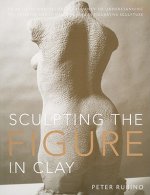
Sculpting the Figure in Clay
129.23 zł -4 % -

21st-Century Jewellery Designers
277.57 zł -14 % -
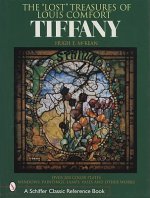
Lt Treasures of Louis Comfort Tiffany: Windows, Paintings, Lamps, Vases, and Other Works
199.07 zł -10 % -

Creating Stylized Characters
151.71 zł -5 % -

Art Of Dishonored 2
218.87 zł -23 % -
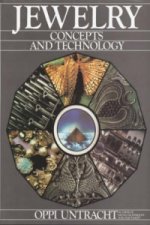
Jewelry Concepts and Technology
352.79 zł -15 % -

Art Of Mass Effect: Andromeda
146.34 zł -14 % -

Art of the Japanese Sword
183.05 zł -5 % -

Art Of Super Mario Odyssey
199.07 zł -10 % -

Art Of Star Wars Rebels
163.45 zł -5 % -

Polishing and Finishing for Jewellers and Silversmiths
51.82 zł -15 %
zadowolonych klientów
Od roku 2008 obsłużyliśmy wielu miłośników książek, ale dla nas każdy był tym wyjątkowym.
Copyright! ©2008-24 libristo.pl Wszelkie prawa zastrzeżonePrywatnieCookies


 21 milionów książek
21 milionów książek Dostawa 10.99 zł
Dostawa 10.99 zł (32) 444 93 66 (8-15.30h)
(32) 444 93 66 (8-15.30h)